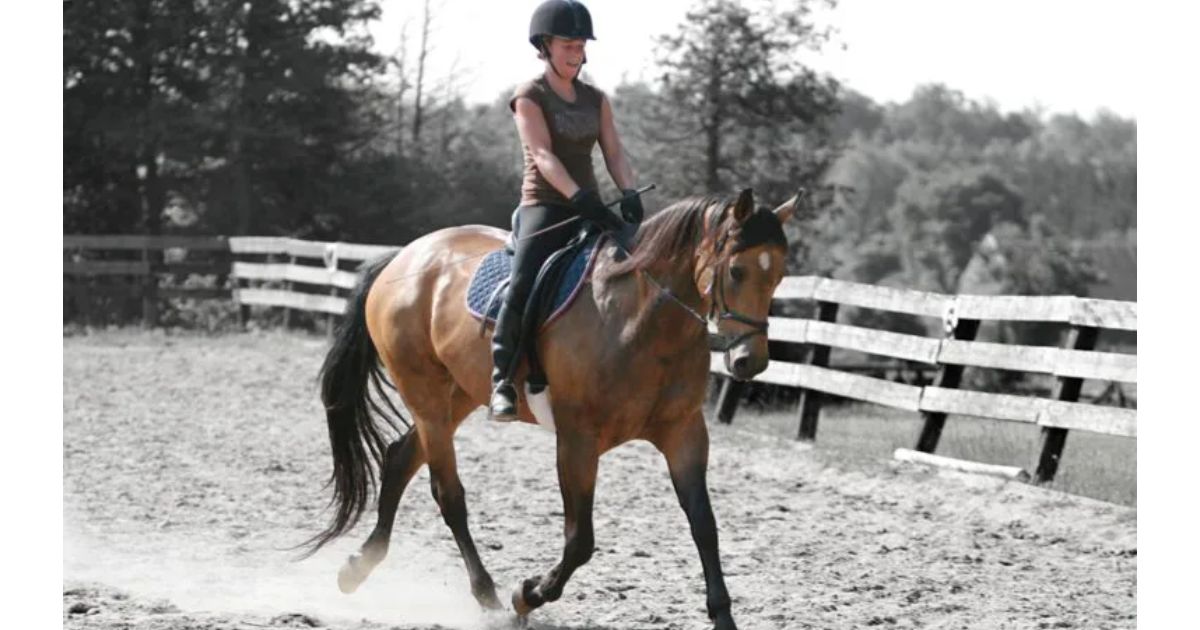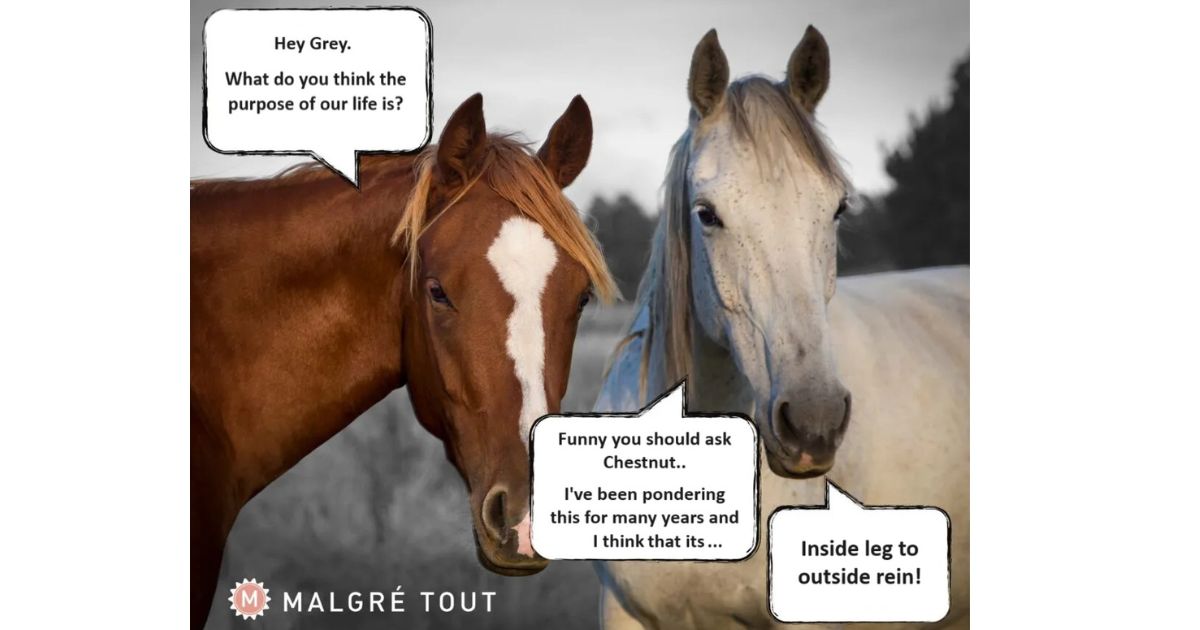Menu

It's a bit like putting on an old, scratched record. It plays in the same groove over and over, repeating a phrase again and again. In the same way, we remind ourselves repeatedly when we sit on the backs of our horses: "Inside leg to outside rein!" But what is actually the idea behind this technique? Why is it so important? And what exactly should one do?

Riding is about balance and finding the right feeling, as close to the horse's own feeling as possible. The main reason that riders struggle to achieve this in collaboration with the horse is that our brain thinks from the perspective of having two legs, not four. It's completely normal for the human brain to think that when you want to turn something to the side in front of you – like a horse – you should make a strong movement in the direction you want to go. This might mean pulling strongly on the inside rein, just as one turns the handlebars on a bicycle or in a car. This, of course, is entirely wrong when sitting on a horse.
Because the horse has four legs, its coordination – the interplay between body and brain – doesn't work like a human's. When it moves, it works largely diagonally. Therefore, as a rider, you must ride with inside leg to outside rein.
Working diagonally, in other words, is completely natural for the horse. It is a reflex. We humans, however, must use our minds thoroughly to remind ourselves of this. And the more times we repeat it, the easier it becomes for us. It will, so to speak, become "engrained in our spines" if we train it enough. However, we will always need to think about it and remind ourselves of it to maintain the ability to do it.
Read also: Jumping: 3 Exercises that can make you flawless
A good exercise to practice riding the horse from inside leg to outside rein is to alternately have the horse make lateral movements and go straight. For example, perform a leg-yielding from a corner and halfway towards the center, after which you ride a few meters straight ahead. Then do a leg-yielding back towards the track and again straight ahead when you hit the track.
It is basic knowledge that the outside rein helps to keep the horse in place on the track, while the inside one is used to guide the horse and round it off. Without this technique, the horse will fall into the volte when you turn it. It can be best compared to also needing to distribute your weight correctly when sitting on a bicycle and turning. Otherwise, it will topple inward to the side you are turning.
Read also: Frost in the water trough? How to keep it ice-free with creative solutions
Sources:
Ashleen Lee, The Plaid Horse: The Madness Behind the Inside Leg to Outside Rein
Dressage Today, Instagram: To achieve the correct connection on the outside rein during a turn…
Horse Listening: “Inside Leg To Outside Rein” – The Cheat Sheet